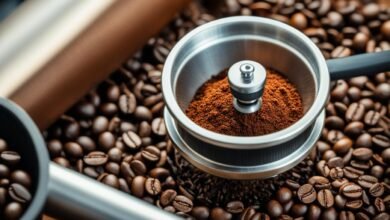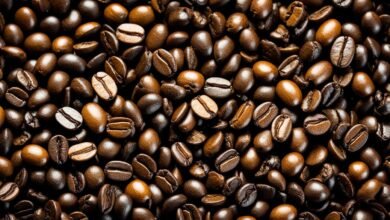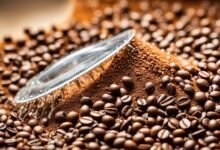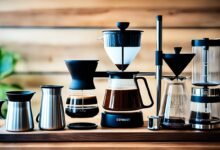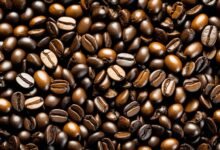Water to Coffee Ratios

I love diving into the world of coffee and finding the perfect brew. It’s all about balancing science and what you like. The water-to-coffee ratio is key to a great cup. Let’s explore how this simple ratio can change your coffee for the better.
Key Takeaways
- The recommended standard coffee-to-water ratio is 1:17 for optimal extraction and strength.
- Weighing ingredients in grams is the best way to achieve precise and consistent results.
- Immersion brewing methods like the French press require a tighter ratio of 1:15 due to longer contact time.
- Water temperature plays a crucial role in extraction, with the ideal range being 195-205°F.
- Adjusting the ratio can help you fine-tune the strength and flavor profile of your coffee.
The Importance of Water to Coffee Ratios
Finding the perfect Coffee-to-Water Ratio is key to a great cup of coffee. The standard ratio of 1:17 is widely accepted for Ideal Extraction and Flavor Balance. But, this ratio might change depending on the brewing method.
Understanding the Golden Ratio
The golden ratio of 1:17 (1 gram of coffee to 17 milliliters of water) is the best Brew Strength for many brewing methods. This ratio makes sure the coffee is just right, not too weak or too strong. It gives you a balanced and tasty cup.
Balancing Strength and Extraction
Methods like French press need a ratio closer to 1:15 because of the longer time the water spends with the coffee. This keeps the Brew Strength and Ideal Extraction right. It’s important to balance strength and extraction for amazing coffee.
“The golden ratio for coffee, which tends to produce the most balanced cup, is 1:18 (1 part coffee to 18 parts water).”
Changing the Coffee-to-Water Ratio can greatly affect your coffee’s taste and smell. Knowing how this ratio works lets you make a Flavor Balance that you like.
Measuring with Precision
As coffee lovers, we know the secret to making great coffee is in the details. Measuring our coffee and water accurately is crucial. This ensures our brews are always consistent and taste amazing.
Why Weigh in Grams?
Experts in the coffee world say it’s best to weigh your coffee and water in grams, not by volume. This method is more precise because coffee’s density changes with roast and type. A simple gram scale in your kitchen helps you get the right ratios for the best results.
The Golden Ratio for making coffee is 1 gram of coffee for every 15-18 milliliters of water. This ratio affects the taste. For example, a 1:15 ratio gives a strong, bright taste, while 1:18 makes it lighter and smoother.
“When brewing coffee, measuring by weight is more precise than measuring by volume.”
For an 8-ounce coffee, the total liquid is usually 240 grams. By figuring out the right ratio, you can avoid guessing and get precise brewing every time.

Unlike automatic coffee makers, weighing your coffee lets you find the perfect balance. This improves your coffee experience.
Water, Coffee, Ratios: Optimal Ratios for Different Brewing Methods
The water-to-coffee ratio is key to brewing the perfect cup of coffee. The standard ratio is usually between 16-20 grams of water for every 1 gram of coffee. But, this can change based on the brewing method you use.
For drip coffee and pour-over, start with a 1:17 ratio. This ratio helps get the right flavors and a balanced taste. But, for French press, use a 1:15 ratio because the coffee and water mix for a longer time.
Changing the ratio helps get the right strength and flavor for each brewing method. You might try a 20:1 ratio for a lighter taste. The grind size also matters, as finer grinds need more water and extract faster.
| Brewing Method | Recommended Ratio | Grind Size | Brew Time |
|---|---|---|---|
| Auto Drip | 1:17 | Medium-fine | 3-5 minutes |
| Pour Over (v60) | 1:17 | Medium-fine | 3-4 minutes |
| Chemex | 1:17 | Medium-fine | 4-6 minutes |
| French Press | 1:15 | Coarse | 4-6 minutes |
| AeroPress | 1:16 | Medium-fine | 1-2 minutes |
| Mokapot | 1:14 | Fine | 5-7 minutes |
| Siphon | 1:16 | Fine | 5-7 minutes |
| Cold Brew | 1:8 | Coarse | 12-16 hours |
These are just basic tips, and the best ratio is up to you. It depends on your taste, the coffee beans, and your equipment. The goal is to experiment and find what works best for you.
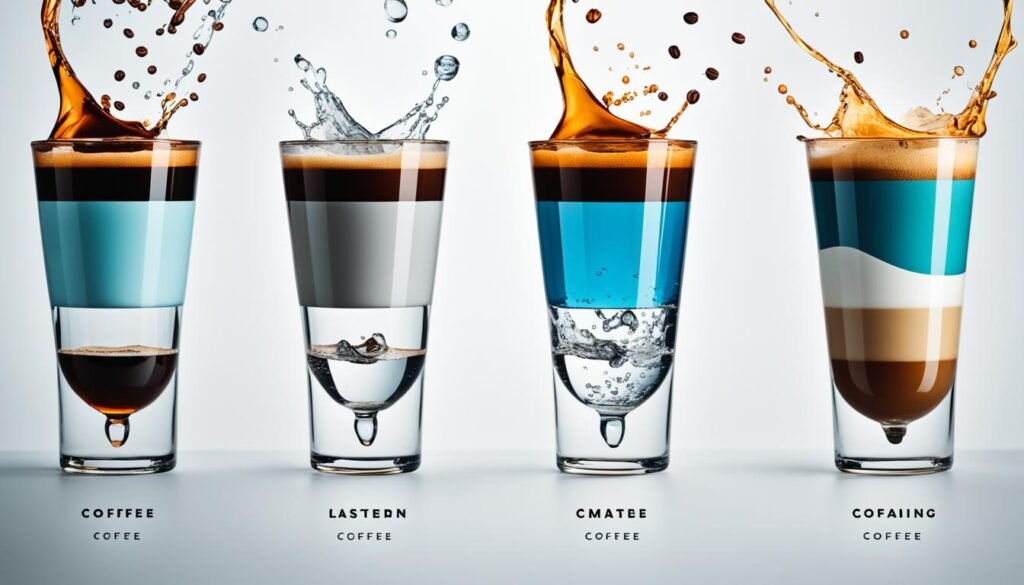
Temperature Matters: The Ideal Water Temperature
Getting the perfect cup of coffee depends a lot on the water temperature. The best temperature for brewing coffee is between 195°F and 205°F (90.6°C to 96.1°C). If the water is too cold, you’ll get a weak brew. If it’s too hot, your coffee might taste bitter, like an over-extracted one.
When you’re brewing by hand, let the water boil, then wait for a minute before pouring it over the coffee grounds. This lets the water cool down to the perfect temperature. This way, you get a balanced taste and a great cup of coffee.
For special machines like AeroPress or Moka pots, the water temperature should be a bit different. For AeroPress, use water between 175°F and 180°F (79°C and 82°C). For Moka pots, use boiling water to cut down on cooking time.
“The ideal water temperature range for brewing coffee is suggested to be within 195°F to 205°F (90°C to 96°C).”
The best water temperature also depends on the coffee beans and how dark they are roasted. Lighter roasts need a bit more heat, about 206°F to 208°F (96°C to 97.8°C). Darker roasts do better with cooler water, around 180°F to 190°F (82°C to 88°C).
Keeping the water temperature right ensures a great taste and a wonderful cup of coffee, no matter how you brew it or what kind of coffee you like.
Time is of the Essence: Brew Time and Contact Duration
The time water spends with coffee grounds is key to the brew’s flavor. Whether you use Drip Brewing or Immersion Brewing, knowing the best brew times is crucial. It helps bring out the best in your coffee.
Drip Brew Methods
Drip coffee makers should brew for about 5 minutes. This time lets the water get all the flavors and oils from the coffee. You can adjust the grind size and coffee-to-water ratio to tweak the Brew Time and Extraction Time.
Immersion Brew Methods
Immersion Brewing methods, like the French Press, need a shorter Brew Time of 2 to 4 minutes. This longer contact with water gives a deeper extraction. It makes the coffee richer and more robust. Try different steep times to find what you like best.
Getting good at Brew Time and Extraction Time is important for great coffee. Whether you like Drip Brewing or Immersion Brewing, adjusting these can make your coffee better. This way, you can always have the perfect cup.

Dialing in Your Perfect Cup: Adjusting Ratios for Taste Preferences
The golden ratio of 1:17 coffee to water is a good starting point. But, we might need to tweak it for our taste. Try adjusting the ratio to find the perfect strength and flavor for you. Paying attention to how it tastes can help us find the ideal ratio.
The ideal ratio for drip brewing can be between 1:12 and 1:17. A 1:12 ratio makes a strong cup, while 1:17 makes it milder. The Specialty Coffee Association suggests a ratio between 1:15 and 1:18 for a balanced flavor.
For taste, you can try ratios like 1:14 or 1:13.5 for a stronger brew, or 1:16 or 1:17 for a sweeter cup. The best ratio can vary by brewing method. Pour-over works well between 1:15 and 1:18, while French Press likes 1:14 to 1:15.
You can adjust the ratio by adding more or less water to suit your taste. The grind size also changes the coffee’s taste. A larger grind makes the coffee less bitter, while a smaller grind makes it more concentrated.
| Brewing Method | Recommended Ratio |
|---|---|
| Pour Over (V60, Chemex) | 1:16 |
| AeroPress | 1:16 |
| Siphon | 1:16 |
| French Press | 1:15 |
| Cold Brew | 1:8 |
“The water to coffee ratio can be adjusted based on personal taste preferences by adding more or less water according to the strength of the brew.”
By Customizing Ratios and focusing on our Personal Taste and Flavor Preferences, we can make Brewing Adjustments. This way, we get the perfect coffee that fits our taste.
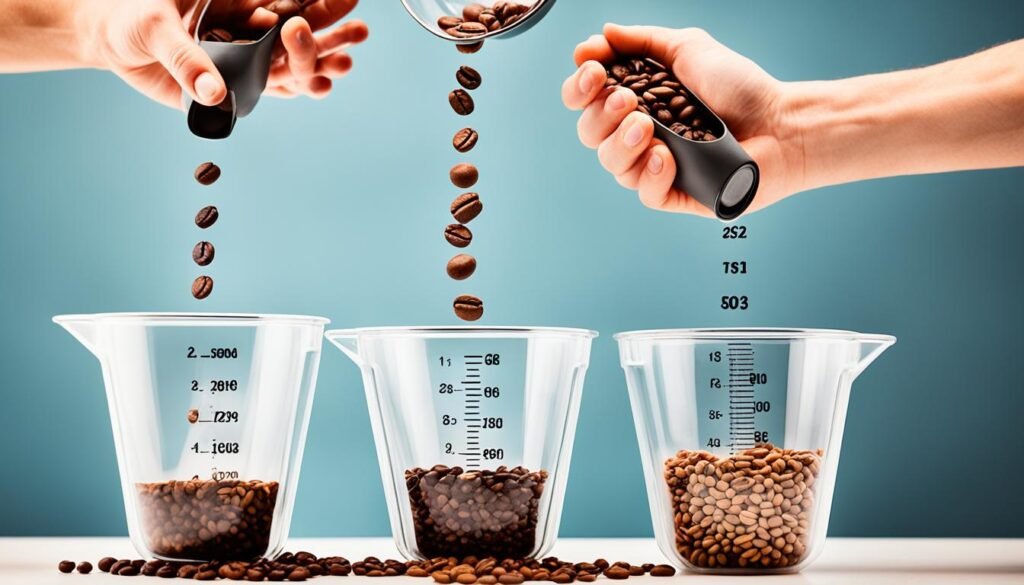
Cold Brew Ratios: The Long Steep
When it comes to cold brew coffee, the brewing process is quite different from traditional hot coffee. It needs a coarser grind and a higher coffee to water ratio, usually 1:8 or 1:9. This method of steeping for 12-16 hours at room or cold temperature makes a smooth, concentrated coffee without the bitterness of hot brewing.
- The preferred cold brew ratio is 1 gram of coffee for every 8 grams of water, with the option to adjust to a 1:4.5 ratio for stronger brews.
- An alternative cold brew ratio is a 1:11 ratio without dilution at the end, depending on the brewing device.
- The recommended brew time for cold brew is typically around 14 hours.
- A medium-coarse grind size, around 7 on a scale of 1-10, is recommended for cold brew.
When filtering, you can pick between a paper filter for clear flavor or a cheesecloth or fiber filter for a cold brew with more texture. After brewing, you can dilute the strong cold brew with water. This is usually done at a 2:1 ratio for a strong coffee or a 1:1 ratio for a milder taste.
Cold brew is all about trying different coffees, filters, and dilutions to find what you like best. With the right ratio and patience, you can enjoy a smooth, rich cold brew.
Troubleshooting: Common Ratio Issues and Solutions
Getting the coffee-to-water ratio right is key to a great cup of coffee. Even experts can face issues. Let’s look at common problems and how to fix them to get your brew just right.
Under-extracted Flavors
If your coffee tastes weak or lacks depth, you might have used too much water. This is under-extraction. Try upping the coffee-to-water ratio to 1:16 or 1:15. This should make your coffee richer and more flavorful.
Over-extracted Flavors
But if your coffee is too bitter or intense, you’ve likely used too much coffee. This is over-extraction. Lower the ratio to 1:17 or 1:18 to balance it out. This will give you a smoother taste.
Getting the Ratio Troubleshooting right is key to enjoying your coffee fully. By tweaking the Under-extraction and Over-extraction, you can perfect the Flavor Adjustments for your ideal coffee.
“The right coffee-to-water ratio is the foundation for a great cup of coffee. It’s the secret to unlocking the true flavors of your beans.”
Every coffee and brewing method has its best ratio. So, don’t hesitate to try different ratios to see what you like best. With patience and practice, you’ll soon be making coffee like a pro at home.
Conclusion: Elevating Your Brew with the Right Ratio
Learning the coffee-to-water ratio is key to making great coffee at home. By knowing the golden ratio and measuring carefully, we can improve our coffee. Finding the right ratio helps with balanced taste, the perfect strength, and a tasty cup every time.
For coffee lovers, shop owners, or those wanting better coffee, understanding Coffee Brewing and Ratio Mastery is vital. By trying different ratios, we can find the perfect one for our taste and brewing method.
As we improve our coffee skills, remember the right ratio is not for everyone. It’s a journey of patience, trying new things, and loving coffee making. With Ratio Mastery, we can make coffee that pleases us and makes our daily routines better.
